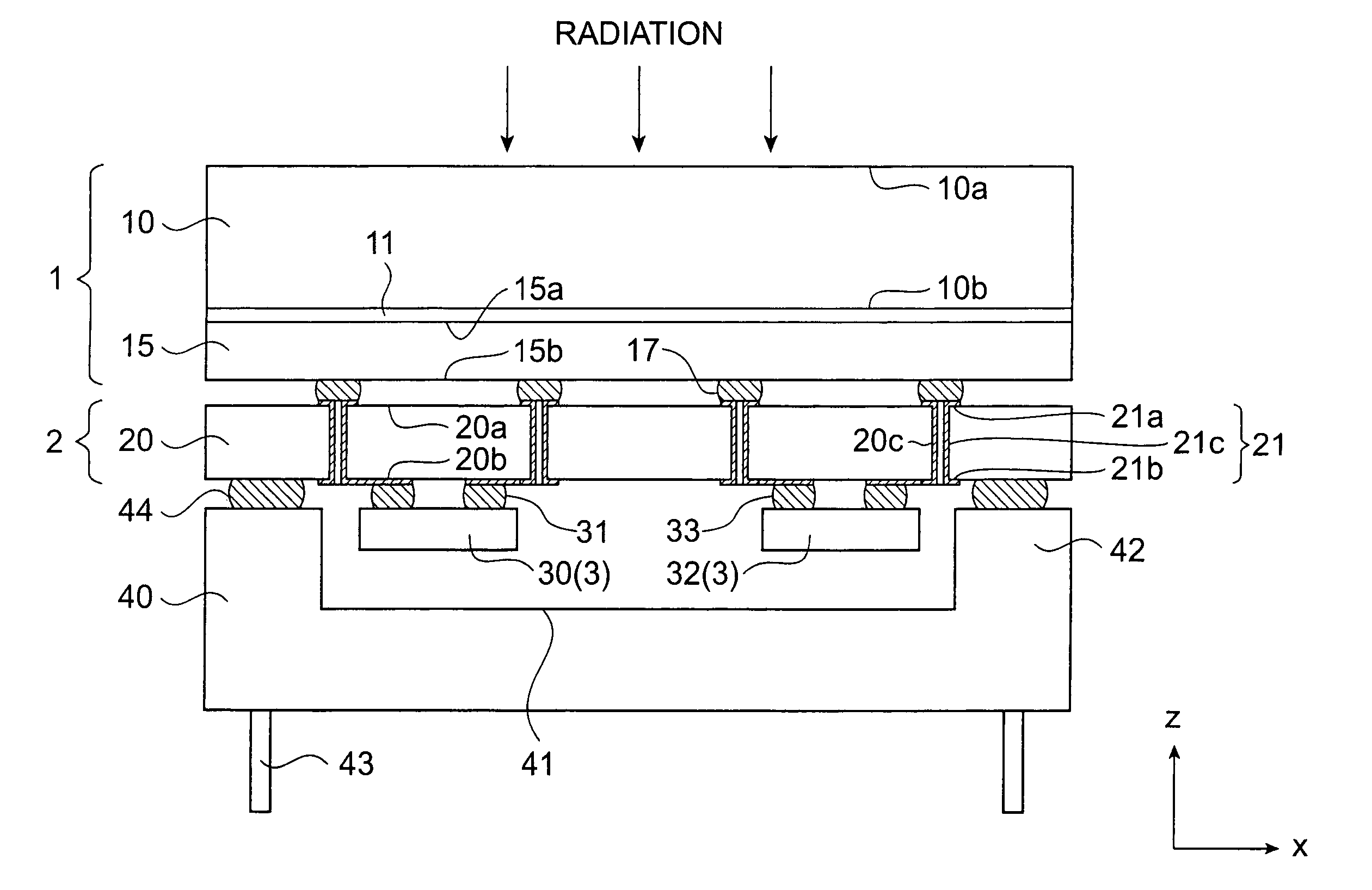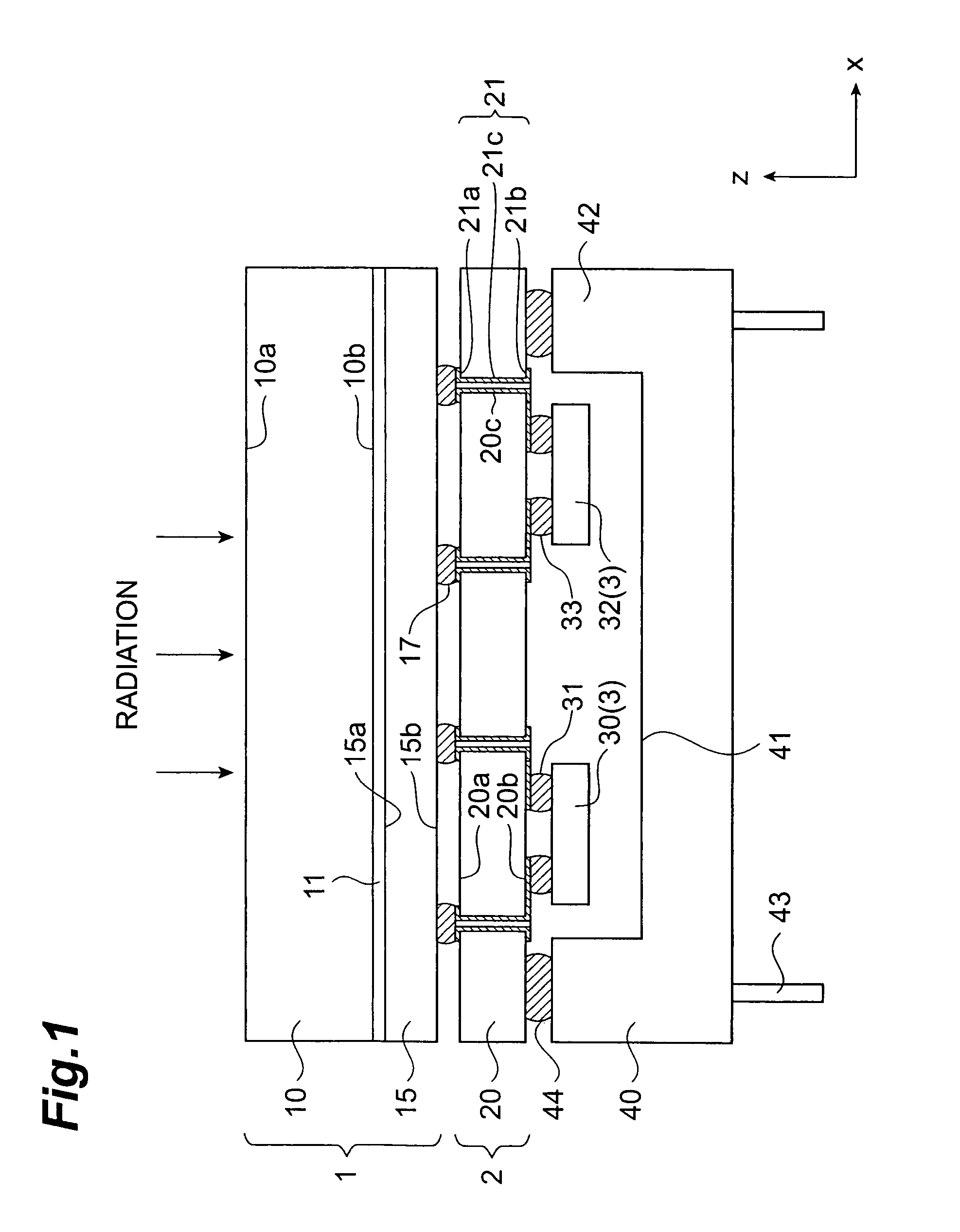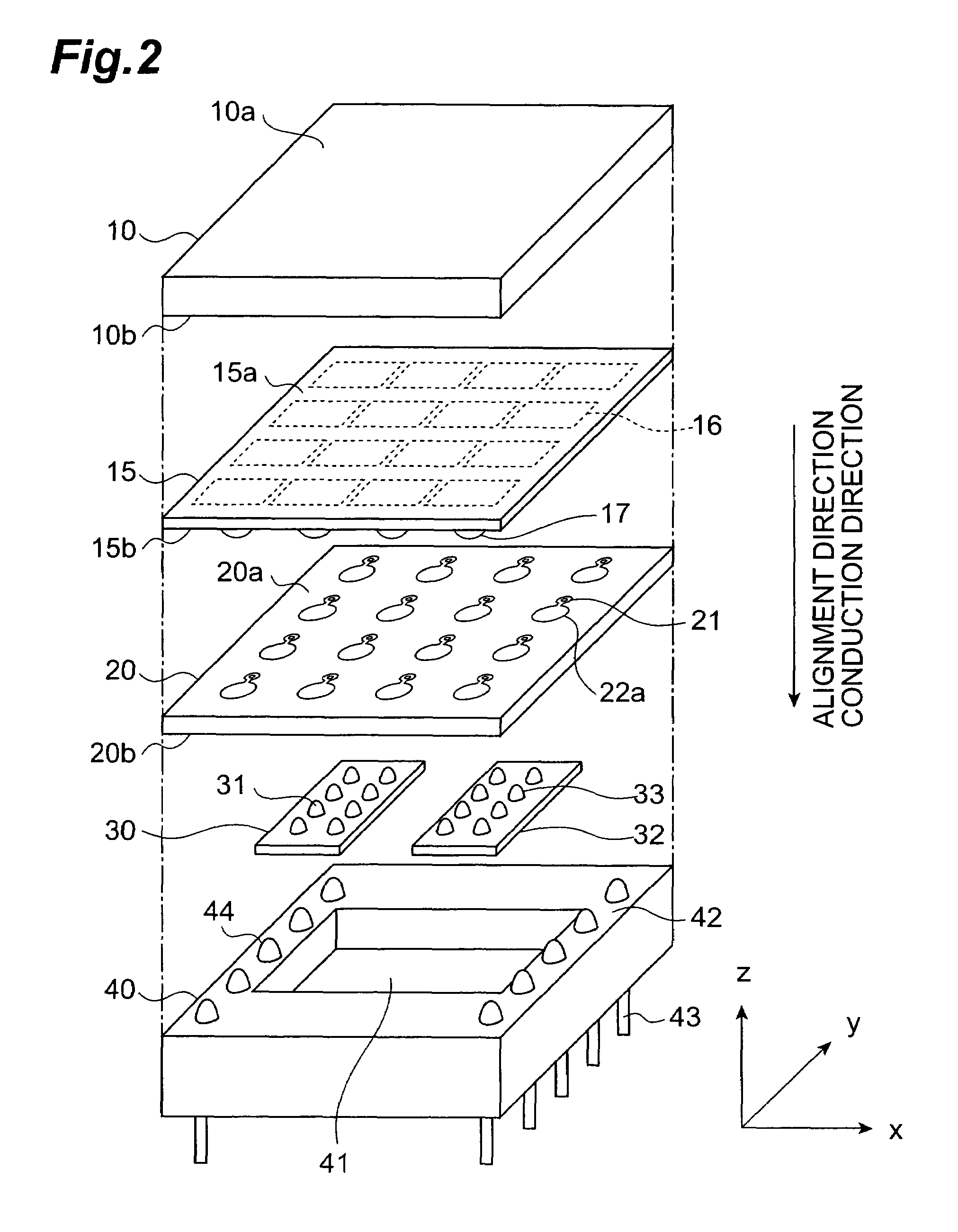Radioactive ray detector
a radiation detector and detector technology, applied in the field of radiation detectors, can solve problems such as degradation in the characteristics of radiation detectors such as sensitivity, reliability, life, etc., and achieve the effect of suppressing radiation transmitting the wiring substra
- Summary
- Abstract
- Description
- Claims
- Application Information
AI Technical Summary
Benefits of technology
Problems solved by technology
Method used
Image
Examples
first embodiment
[0034]FIG. 1 is a sectional side view illustrating the sectional structure of a radiation detector according to the present invention. FIG. 2 is an exploded perspective view illustrating components in the configuration of the radiation detector shown in FIG. 1. For convenience in description, as shown in FIG. 1 and FIG. 2, it is defined in each of the following drawings that radiation is incident along the direction of z-axis, and two axes orthogonal to the z-axis are the x-axis and y-axis. In the configuration herein, the negative direction of the z-axis is the conduction direction from a signal input surface to a signal output surface in the wiring substrate, and the alignment direction of the components in the radiation detector.
[0035]The radiation detector shown in FIG. 1 includes a radiation detecting section 1, a wiring substrate section 2, and a signal processing section 3. As shown in FIG. 2, these components are arranged in that order from the upstream side (the upper side ...
second embodiment
[0081]FIG. 7 is a sectional side view illustrating the sectional structure of a radiation detector according to a FIG. 8 is an exploded perspective view illustrating components in the configuration of the radiation detector shown in FIG. 7.
[0082]The radiation detector shown in FIG. 7 includes the radiation detecting section 1, the wiring substrate section 2, the signal processing section 3, and the housing 40. Of these components, the configurations of the radiation detecting section 1 and the housing 40 are the same as those of the embodiment shown in FIG. 1.
[0083]The wiring substrate section 2 is located downstream of the radiation detecting section 1. In this embodiment, the wiring substrate section 2 has a wiring substrate 25 in which provided is a conduction path for guiding an electric signal between the signal input surface and the signal output surface. The wiring substrate 25 employs, as its substrate, a glass substrate formed of a predetermined glass material having a rad...
third embodiment
[0114]FIG. 13 is a sectional side view illustrating the sectional structure of a radiation detector according to a FIG. 14 is an exploded perspective view illustrating components in the configuration of the radiation detector shown in FIG. 13. In FIG. 14, the scintillator 10 and the housing 40 are not illustrated.
[0115]The radiation detector shown in FIG. 13 includes the radiation detecting section 1, a wiring substrate section 6, the signal processing section 3, and the housing 40. Of these components, the configurations of the radiation detecting section 1 and the housing 40 are the same as those of the embodiment shown in FIG. 1.
[0116]The wiring substrate section 6 is located downstream of the radiation detecting section 1. In this embodiment, the wiring substrate section 6 has a wiring substrate 60 in which provided is a conduction path for guiding an electric signal between the signal input surface and the signal output surface. The wiring substrate 60 employs, as its substrat...
PUM
 Login to View More
Login to View More Abstract
Description
Claims
Application Information
 Login to View More
Login to View More - R&D
- Intellectual Property
- Life Sciences
- Materials
- Tech Scout
- Unparalleled Data Quality
- Higher Quality Content
- 60% Fewer Hallucinations
Browse by: Latest US Patents, China's latest patents, Technical Efficacy Thesaurus, Application Domain, Technology Topic, Popular Technical Reports.
© 2025 PatSnap. All rights reserved.Legal|Privacy policy|Modern Slavery Act Transparency Statement|Sitemap|About US| Contact US: help@patsnap.com



